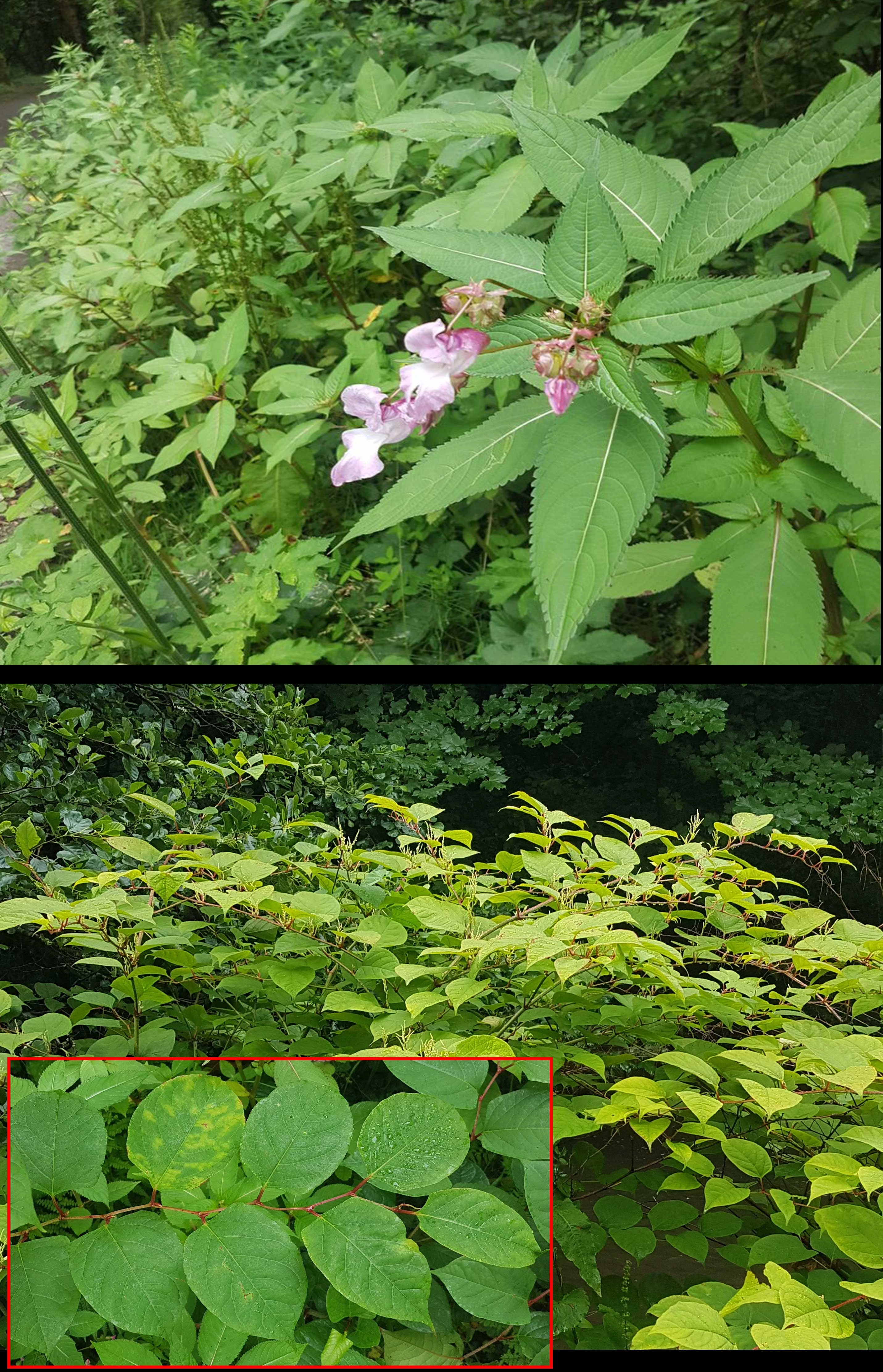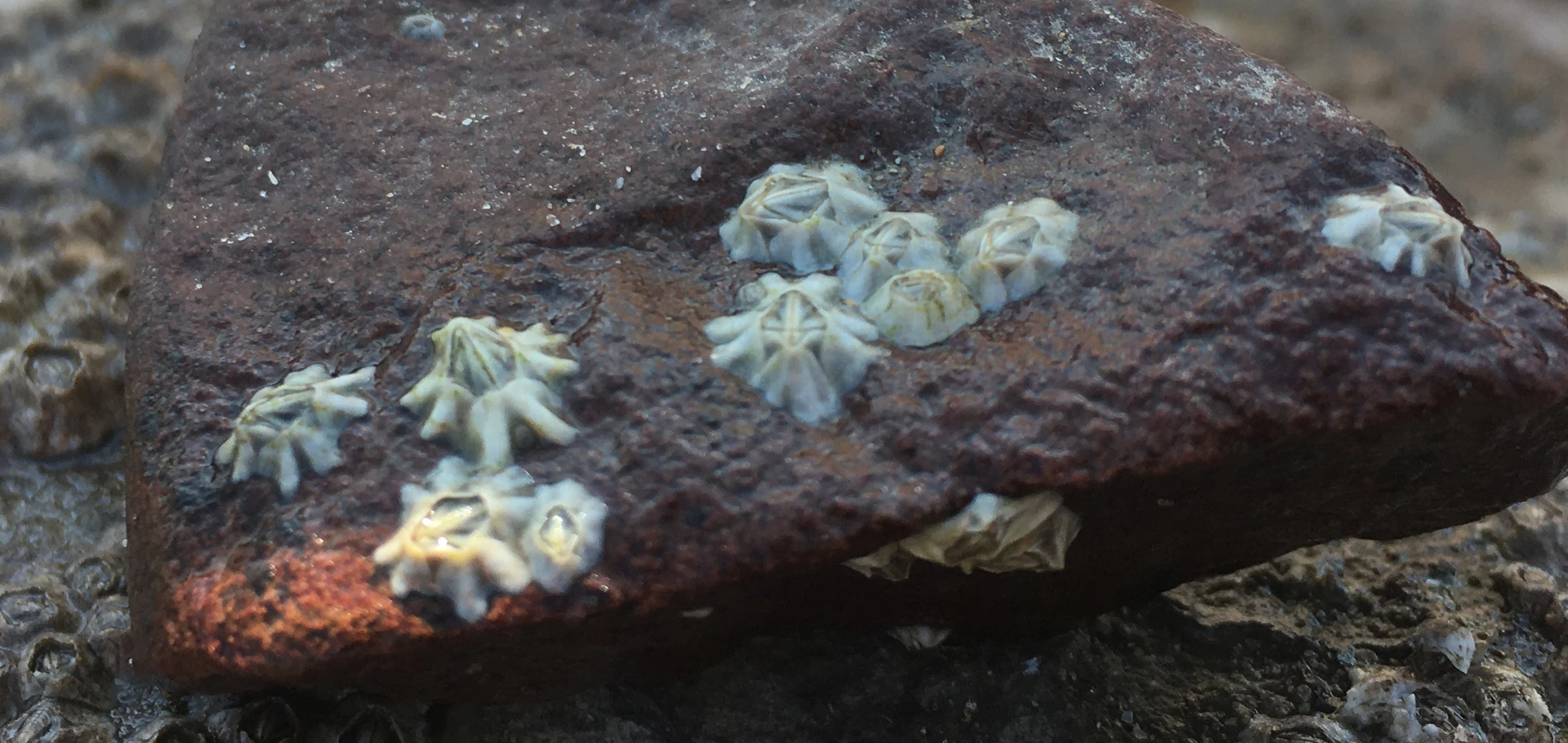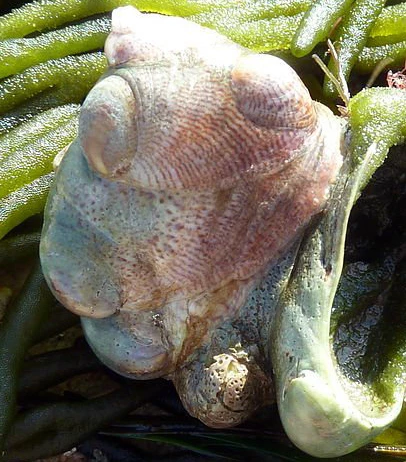Alien Invaders
Watch out for these where you live: Himalayan Balsam and Japanese Knotweed
Pom-pom weed (Caulacanthus okamurae) attaches to mussels forming a dense sheet
Darwin’s Barnacle (Austrominius modestus) travelled all the way from Australia on ships during WWII. It attaches to rocks. [Figure caption – barnacle plates]
You’ve probably seen these stacks of these American Slipper Limpets (Crepidula fornicata) on your local shore
Invasive species can wreak havoc on our biodiversity, economy and health
How do we know that a plant or animal is a problem?
Knowing how to identify these alien/invasive species is important to save our ecosystems – and this is where Amgueddfa Cymru’s taxonomists come in…
Have you ever wondered what Invasive Species are? Some people know them as aliens, but what is all the fuss about? Why don’t they belong here and what harm can they do?!
In fact, Invasive species are causing problems with our wildlife, our economy, and our biodiversity. They take over habitats and spread quickly, wreaking havoc, costing millions in repairs, and can spread diseases that our native plants and animals cannot fight against. In general, they are a real nuisance! If you’d like to learn more and help with the fight read on.
What are non-native species?
The world has become a much smaller place in terms of travel, but as we move around the planet for business, holidays and trade, animals and plants move with us. Years ago, before we realised what an issue we were causing, we imported plants because they looked pretty or shellfish because they grew quickly, making a fast profit. However, these plants and shellfish could hide other animals or plants, and these were all set to invade too!
When species arrive at a location that they would not have naturally been able to reach they are classed as Non-Native. It is not a habitat that they could reach without human help. When non-native species find that conditions are right and become established, it can turn out to be a real problem. In Britain over 2000 plants and animals have been introduced from all over the world by humans either intentionally or by accident.
What is an Invasive species?
While most of the non-native animals and plants in Britain are harmless, around 10–15% can spread and begin to have a negative impact on our native species, our health, ecosystems and our economy. It is then that they are classed as Invasive Species.
There are two good examples of problem plants that are invasive species that you are likely to see where you live. The first is Himalayan Balsam that goes by the fabulous Welsh name of Jac y Neidiwr. A pretty, pink flower that spreads like wildfire, it was brought to the UK from the Himalayas in 1839 as a garden ornamental. The second is Clymog Japan (or Japanese knotweed) which has deep underground stems so even if you chop it down it grows back the following year. It can grow to 2.1m (7ft) shading all other plants. Both these invasive plants suppress other plant growth, reducing biodiversity in that area.
Animal intruders are just as much of a problem, sometimes even more so as they are usually a bit more mobile. And even those static ones that live in the sea, like oysters and sea squirts, have a mobile breeding phase allowing them to spread elsewhere.
Marine Invaders - where do they from and how do they get here?
In the marine realm, things can be just as problematic. Wireweed (Gwymon Sargaso) is a floating brown seaweed with small gas bladders along its stem. Accumulating in harbours and on beaches it is a nuisance, shading other seaweeds, which like land plants need sunlight to grow. Wireweed grows very quickly, entangling propellors, but it also reduces primary production, an important component of a healthy ecosystem. This causes negative effects on our native animals and plants, changing the biodiversity balance.
Invasive species are bad news although some of them are a direct result of human importation, many are the result of accidental introduction via aquaculture, ballast water in ships or other means. Many of the marine invertebrate species known as invasive species have a sedentary adult stage, however, they have a mobile larval stage in their life cycle. This allows for movement of species as tiny planktonic animals. Once in the water column, minor currents can transport them within the harbour allowing them to move from ship to ship.
In Britain and Ireland the number of species that are classed as non-native fluctuates and scientists constantly research horizon species – those that have been found in a nearby country that could turn up here. For marine species one of those places routinely monitored is the Netherlands as it is so close to our shores - if something turns up there it is likely that six months or so later it will be found in British waters.
Luckily Natural Resources Wales (NRW) have produced a guide to marine non-native species in Wales. And Amgueddfa Cymru has a Marine Invasive Species Kit, produced in partnership with NRW, that can be loaned out for workshops to help people identify non-native species. For further details on that kit contact: anna.holmes@museumwales.ac.uk.
Human imports
Species become invasive when conditions are just right for them, this means that they can outgrow and outcompete native species for food and space. A good example of this is the Wystrysen y Môr Tawel or the Pacific Oyster (Magallana gigas). Once, our native European oyster (Ostrea edulis) populations thrived. In Roman times they were shipped back to Italy for consumption, but today, years of unsustainable trawling and the spread of a deadly disease has greatly reduced stocks. Due to this reduction in numbers, the Pacific Oyster with its heavy, robust shell, fast growth rate and resilience to disease, was introduced in the 1960s for commercial purposes. The first record in the wild was just five years later and it has spread rapidly. In southern England, a popular aquaculture area, escapees have reproduced and are wreaking havoc in some locations. Causing dense aggregations of sharp, heavy shells, they are hazardous for humans and animals walking on beaches. 150,000 Pacific oysters in the Devon and Cornwall area were recorded recently where several years previous there were very few. (For further reading on this check out Pacific oyster expansion threatens Devon and Cornwall estuaries - BBC News).
Cimwch Americanaid or American lobster (Homarus americanus), is imported to the UK and has been since the 1950s. It is cheap and industrially fished, but unfortunately has brought a disease with it that harms our European lobster. The American lobster is considered an invasive species because it can outcompete our native lobster for space and can breed with it; a process called hybridisation (when two similar species can successfully breed). It is difficult, but not impossible, to identify the American lobster - causing an issue for those trying to monitor the invader.
Aquaculture Funding and support
Many species were accidentally introduced, hidden on plants, in the soil or even on animals such as oysters. Ewin Mochyn or the Slipper Limpet (Crepidula fornicata) was accidentally introduced with oyster spat from eastern North America in the 1970s and has rapidly spread. Once the Slipper Limpet arrived in foreign destinations it was able to maximise its good fortune by having planktonic larvae that could help it spread locally. Today, strict aquaculture regulations are attached to import of any non-native species and so theoretically this should not happen again. Unfortunately, the Slipper Limpet is here to stay as it is impossible to get rid of. It enjoys an offshore and lower beach habitat forming dense stacks of individuals and attaches to and smothers native wildlife.
Ballast water and hull invaders
One of the major transporters of marine non-native species are the large cargo ships. To travel across seas and oceans the huge ships take on ballast water (also above) at their point of origin to keep the vessel balanced. The water is sucked in through pipes while in port, sometimes with the larvae of potential invasive species in the water. Once at the destination port, ballast tanks are emptied, dispersing the larvae in a completely different location. A large percentage of marine invaders were initially imported this way. However, today there are control measures in place for managing ballast water in British ports.
Many marine interlopers used times of conflict to their advantage and attached to warships that travelled across the world. The Leathery Sea squirt (or Chwistrell Fôr Ledr) was first recorded in Plymouth in 1953 just after the Korean war. Ships returned to port during and after the conflict with various critters attached to their hulls and one, the leathery sea squirt, has now spread as far as Orkney. Able to attach to hard surfaces it is often encrusted with other animals and plants and in the UK is commonly found with other invasive species.
Darwin’s barnacle, Gwyran Darwin, a native of Australia, was first spotted in Britain in Chichester Harbour in 1946 and is known to attach to hulls of submarines and warships. Hitchhiking on wartime traffic, the crustacean had crossed the world! It has since spread across the rocky shores through England into Wales and has now reached Scotland and Ireland with 7861 records and counting in the British Isles. Distinctive and rather pretty with its white frilly edged plates, it is found covering rocks on our shores all around the Welsh coast.
Rafting on plastic litter as a mode for transport
Our seas and oceans are connected, forming one huge body of water that potential marine invaders can exploit. While the common types of import such as aquaculture, ballast water and hull attachment are well-known and monitored to a certain extent, there is one area that is relatively unknown. Some marine animals that can attach or cling to floating plastic items and cross seas without any assistance from humans. Rafting species, as they are known to scientists, use plastic litter to travel from shore to shore and even across oceans. Currents create a huge conveyor belt for those species that are able hang on for the duration. For more information on Rafting animals see Rafting bivalves in Britain and Ireland | Museum Wales
But can you do anything to help?
The answer is yes, if you would like to join the fight, extra eyes on the ground are always welcomed! Check, Clean, Dry is a national biosecurity campaign and although originally aimed at freshwater river and lake users it can be applied to the coast as well. If you wear shoes with a rugged sole, check to see if anything it stuck in the bottom. Wash with freshwater and scrub off anything that is attached and then leave to dry. But, beware, some marine animals like shells and barnacles can close up and survive out of water for a few days so be vigilant.
In Wales an app has been created to record invasive species and not just marine ones. To find out more check out Ecosystem Invaders Ecosystem Invaders | North Wales Wildlife Trust



